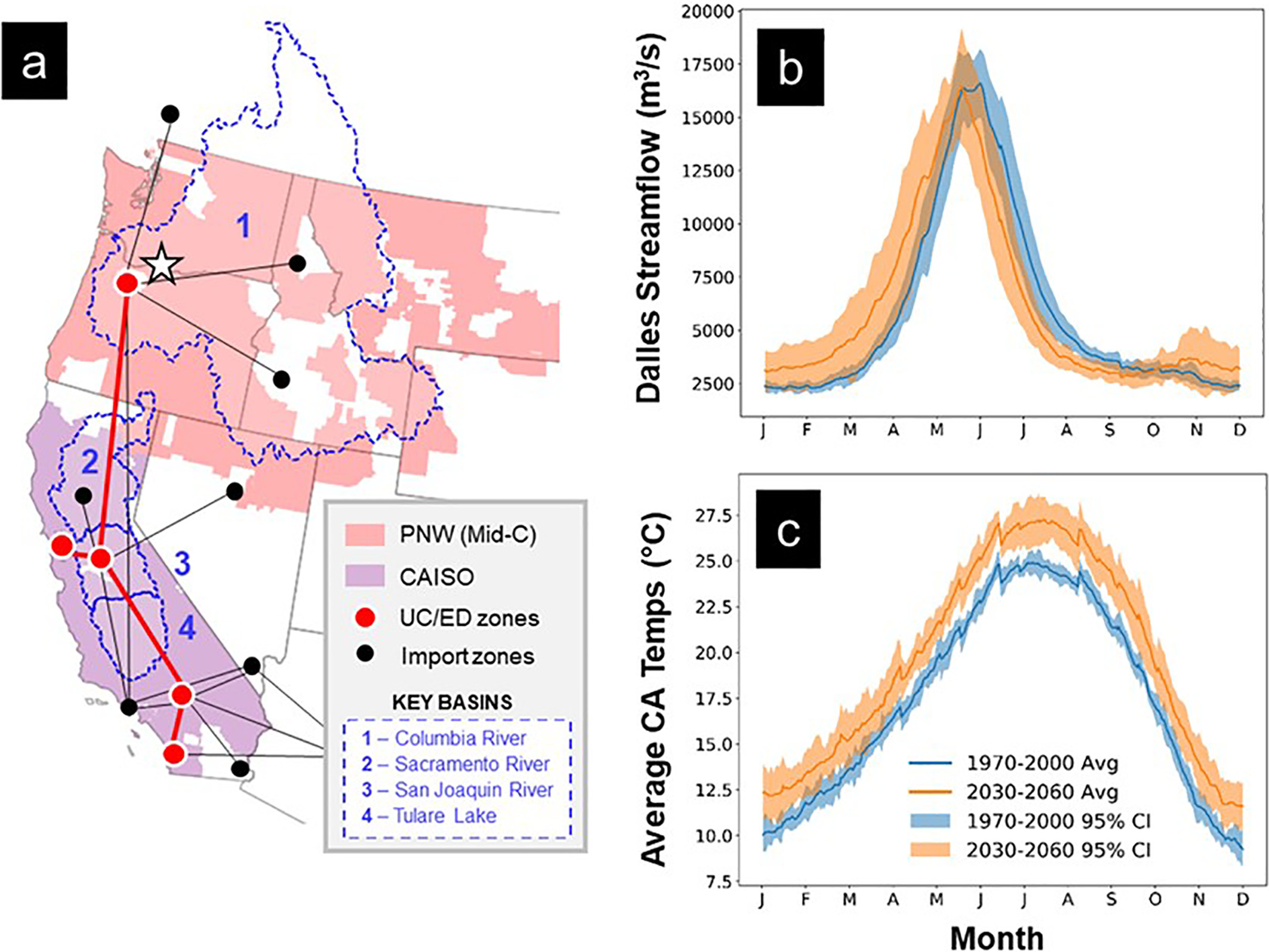Despite drought, hydropower still generated & delivered
September 26, 2022
DOE hydrologists research reliability even under heat wave.
A new Pacific Northwest Nationwide Laboratory (PNNL) report reveals hydropower has sustained 80 percent of average power generation levels throughout the most extreme droughts in recent decades. Hydropower continues to help balance supply and demand in the grid.
PNNL hydrologists suggest the connection between drought and the generation of hydroelectric energy is more nuanced and the outlook less pessimistic than policymakers and system planners decry.
Sean Turner, water assets modeler at PNNL and principal creator of the report, led the analyses of a combination of 20 years’ of annual power generation data from more than 600 hydroelectric power plants, historical precipitation data from eight distinct hydropower climate regions in the western U.S. and unique reservoir operating conditions. Then the hydrologists extrapolated hydropower generation dating back to the year 1900.
Categorizing hydroelectric plants
The team used machine learning and statistical analysis to categorize hydroelectric plants according to yearly generating patterns. Distinct hydropower climate regions reveal that hydropower plants west of the Cascades experience different climatic conditions than those to the east, even when they exist in the same, large river basin like the Columbia River.
“State boundaries might not be the most relevant for understanding the impacts of drought on hydropower,” said Turner. “Grouping them by climate conditions leads to a cleaner assessment of the impact of drought on hydropower.”
Looking at the bigger picture
 News stories about one particular dam like Glen Canyon Dam during a drought or one particular state, like California, may give the public an inaccurate impression that hydropower won’t be very reliable in the future, “but one dam represents just a small portion of overall capacity,” said Turner. “…Total western hydropower will still be a major source of power supply even during the worst drought years.”
News stories about one particular dam like Glen Canyon Dam during a drought or one particular state, like California, may give the public an inaccurate impression that hydropower won’t be very reliable in the future, “but one dam represents just a small portion of overall capacity,” said Turner. “…Total western hydropower will still be a major source of power supply even during the worst drought years.”
During a drought, less rain and snowfall results in less water flows and lower hydroelectric power production. However drought has yet to concurrently impair hydroelectric power throughout all areas of the West. An area unaffected by drought may complement energy shortages in another area impacted by drought.
The PNNL hydrologists reported that over the past 20 year period of study, no drought has simultaneously affected all major hydropower generation regions.
Low river flows and reservoir levels in California and the Southwest are affecting hydropower generation, but the Northern Cascades and Columbia River Basin in Washington, Oregon, Idaho, and British Columbia are dispatching “the lion’s share” of hydroelectricity to the grid in the West.
“…water resource conditions are actually above average right now in the Northwest,” commented Turner.
Both a backward extrapolation of regional hydropower and the available data on power generation for the 20th Century indicate that a repeat of the historical Western drought of 1976–1977 could be worse for hydropower generation than any other drought this century. Unlike recent events, that period affected all major hydropower generating regions of the Northwest and California.
“The climate models disagree as to whether droughts will become more severe or frequent in the future, or if the area is going to become drier or wetter in terms of precipitation over the next hundred years,” said Turner.
Under the strain of heat waves
PNNL power systems modeler Konstantinos Oikonomou has been investigating hydropower dam performance during a recent heat wave during the last week of June, 2022.
“Rapid snowmelt during the heat wave helped reservoirs fill with water, which allowed hydropower plants to meet the increased load demand” as residents and businesses sought relief from air conditioning.
Then researchers asked about multiple and consecutively heat waves and declining water availability from diminished snowpack. Hydrologists and power system modelers simulated the impacts of compounded heat waves and droughts on the power grid; they found that regional interconnections are critical to manage extreme events.
Oikonomou’s research now focuses on creating a new framework for simulating grid behavior under extreme weather conditions, such as compounding droughts and heat waves, and under occurrences like faulty transmission lines.
He will run a variety of what-if scenarios for an entire year using the Western Electricity Coordinating Council’s large-scale power grid model “to zoom in on particular timestamped events to understand energy shortfalls and other energy resources in the system (that) had to ramp up to compensate for the loss of hydropower.”
Oikonomou believes the finding will “help operators and system planners explore mitigation strategies to fortify the grid against outages.”
The research is supported by U.S. DOE, Water Power Technologies Office’s HydroWIRES Initiative.